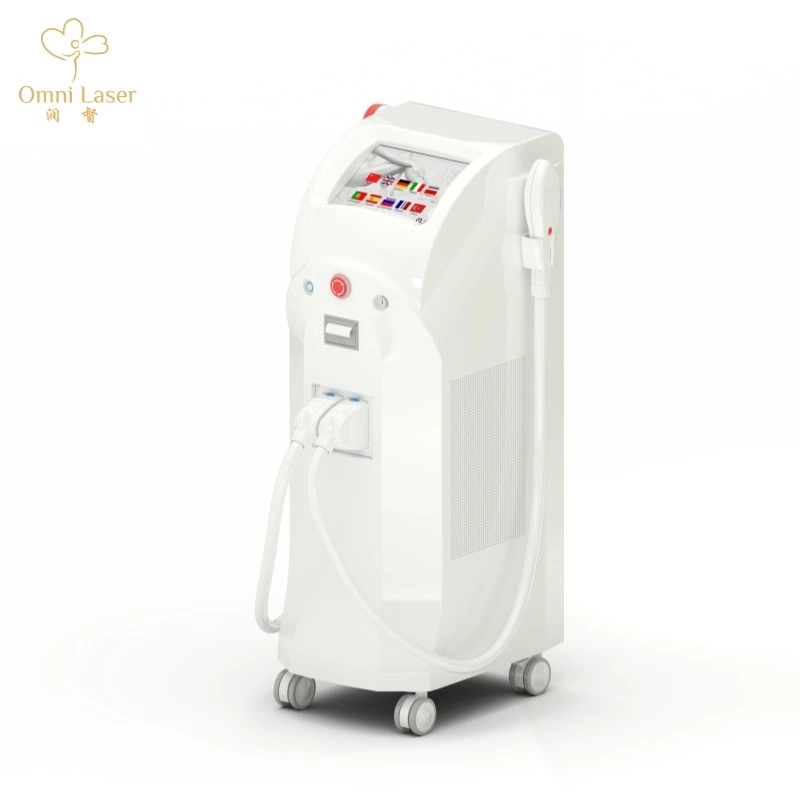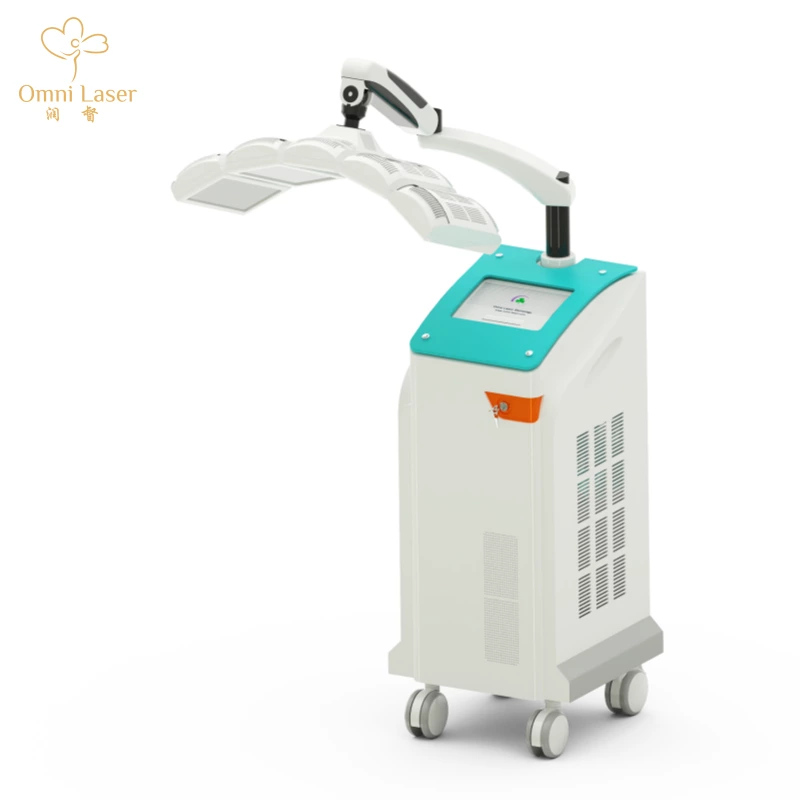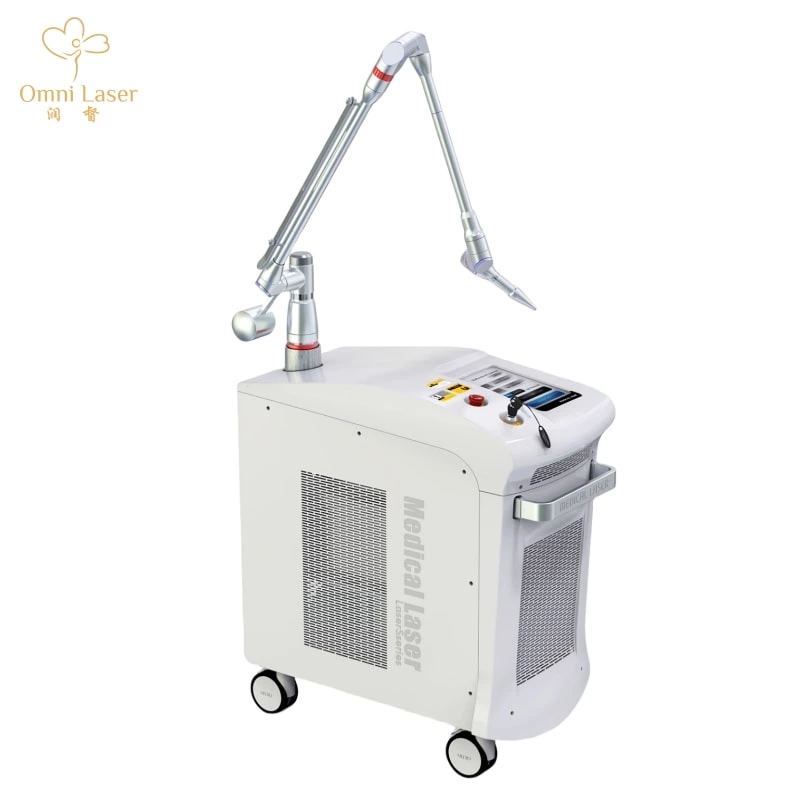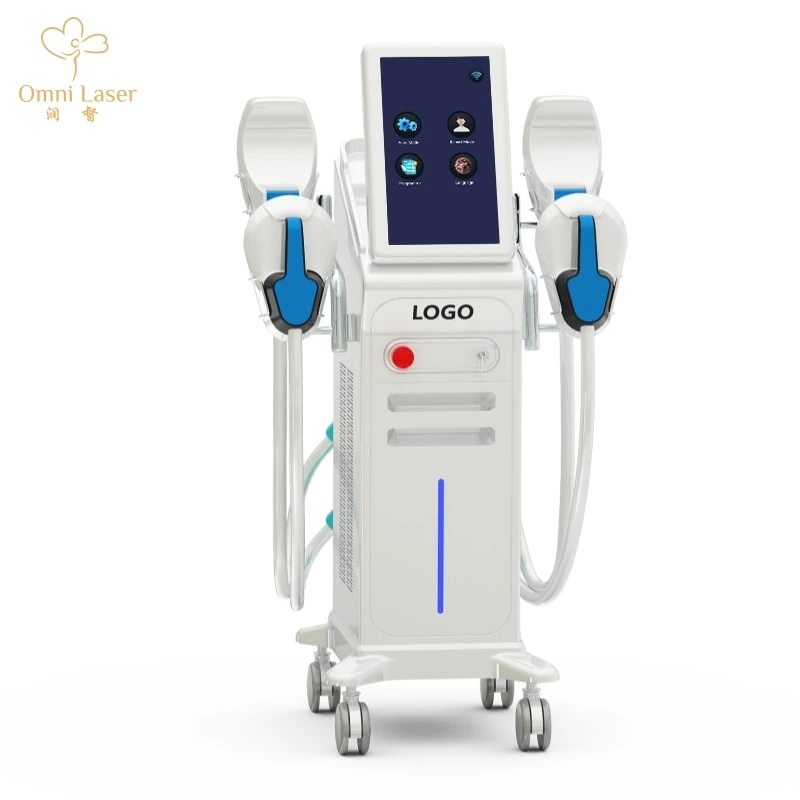How can PDT therapy safely and effectively eliminate acne
PDT Therapy for Effective Acne Removal
What cause acne?
Skin is covered with tiny holes called hair follicles, pilosebaceous follicles or pores. Follicles contain sebaceous oil glands, which produce sebum, the oil that prevents hair and skin from drying out.
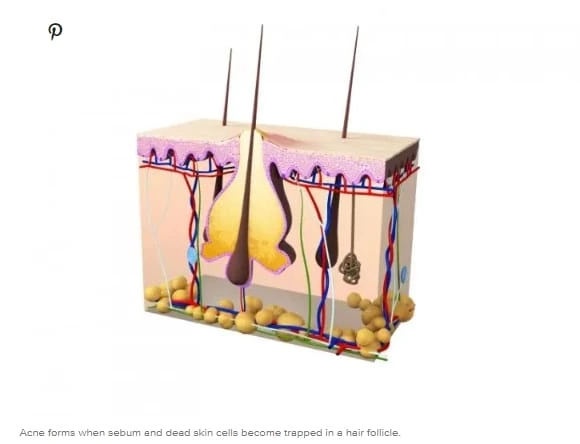
Dead skin cells normally rise to the surface of pores, to be shed by the body.
During puberty, hormones can cause excess oil production, so that it clumps together with dead skin cells inside the pore and with dirt or oil from outside. The cells and oil become trapped inside the pore, creating a sticky plug: this is acne.
If the bacteria that live on the skin – Propionibacterium acnes – enter the clogged pore, they can multiply quickly, causing inflammation. If the inflammation goes deep into the skin, an acne cyst or nodule appears.
Acne is not infectious, and it is not caused by greasy foods or chocolate, makeup or stress.
Apart from hormonal factors, a link between high glycemic load and acne has been suggested. Oily makeup should be avoided as it can clog up the pores; environmental irritants – such as pollution and high humidity – and oil in the air are also factors. Adult acne may be made worse by smoking.
Types of acne
Dermatologists grade acne in four categories, according to the severity:
- Grade 1 (mild): mostly confined to whiteheads and blackheads, with a few papules and pustules
- Grade 2 (moderate, or pustular acne): multiple papules and pustules, mostly confined to the face
- Grade 3 (moderately severe; nodulocystic acne): numerous papules and pustules; the occasional inflamed nodule; the back and the chest may also be affected
- Grade 4 (severe nodulocystic acne): numerous large, painful pustules and nodules; inflammation.
The type of treatment will depend on the type of acne.
Recommended treatment scheme
Strongly recommended treatment project from Omni-laser. Click picture to view more...
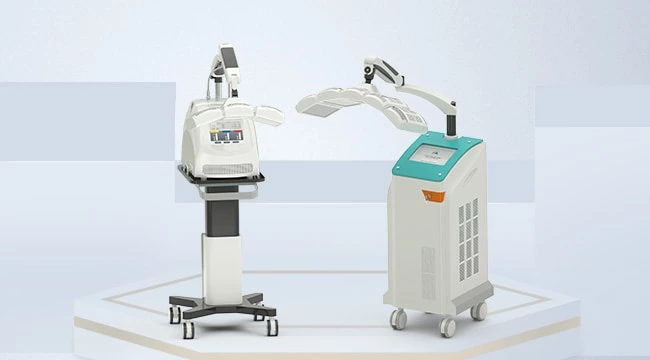
Dealing with acne
One of the many myths about acne is that it needs to “run its natural course.” However, while not physically serious, it can have profound and lasting effects on the individual, which can be alleviated if medical attention is sought.
Acne’s impact on self-esteem is well documented; it can lead to anxiety, loss of confidence, social withdrawal and absenteeism from school and work. Grades can suffer; bullying and isolation may occur. Teenage depression and suicidal thoughts have been linked with “bad” acne.
Physical consequences include dark spots on the skin that may take months or years to disappear; cysts and nodules can cause permanent scarring.
All these can be helped or prevented with appropriate treatment.
Advantages of PDT for acne
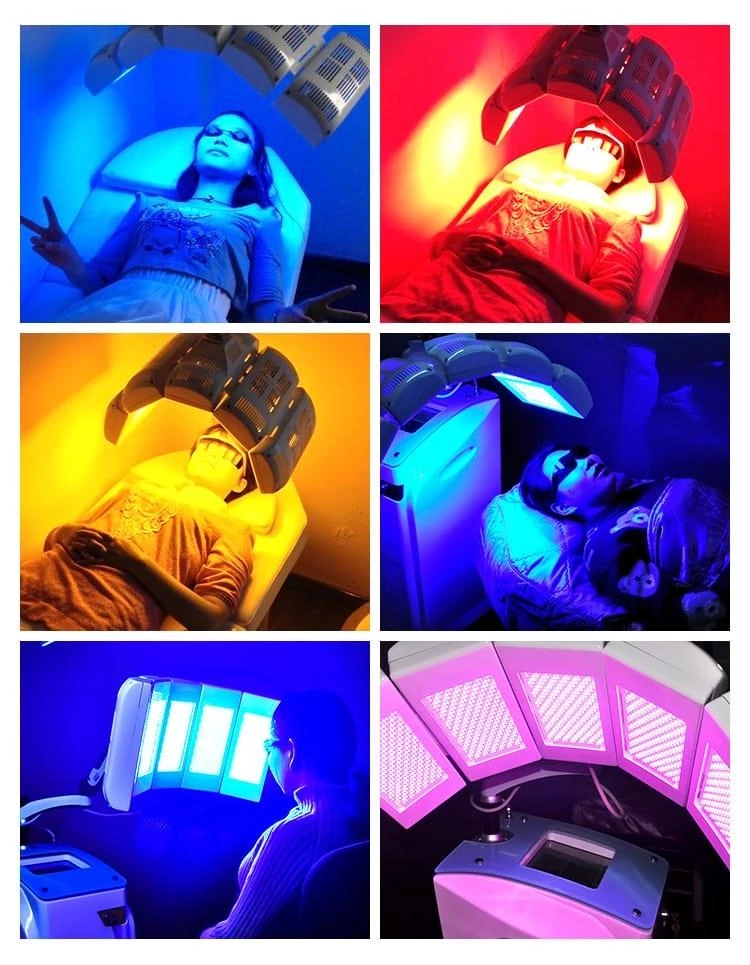
Photodynamic therapy may offer benefits over other therapies. Its positives include:
- killing acne-causing bacteria on the skin
- affecting only targeted cells, helping to maintain skin integrity
- reducing the size and activity of sebaceous glands
- helping fade old acne scars
- not causing scarring
- treating other skin conditions that may co-occur alongside acne, such as age spots and rosacea
- can be used along with medication if needed, except isotretinoin (Accutane)
Another important benefit of photodynamic therapy is that it does not involve the use of antibiotics or oral retinoids, such as Accutane. This makes PDT a viable treatment for people who cannot take those medications.
PDT may be especially beneficial for people with severe acne or those whose acne has not responded well to other treatments.
What to expect during PDT treatment
Next, a medical light source is shone on the skin for 8-20 minutes. The light activates the photosensitizing agent.
At this stage of the procedure, some people may experience a stinging or burning sensation, the intensity of which varies.
What to expect during PDT treatment
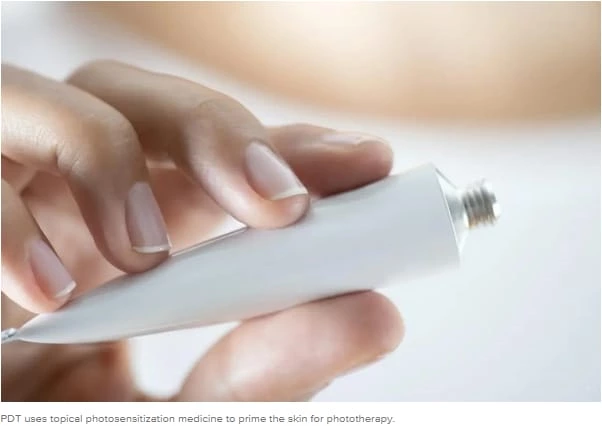
After treatment, the skin is extremely sensitive. People must stay indoors, out of sunlight, for 48 hours following treatment. This is because the photosensitizing agent makes skin sensitive to sunlight, so there is a risk of severe burns from sun exposure.
Sunscreen does not provide adequate protection during the period just after treatment.
People should discuss using topical acne lotions, makeup, and other skin products with a doctor following PDT. In particular, people may need to avoid products that contain oils or waxes for a period.
Follow-up sessions
The number of treatments required depends on the person’s skin type, the number of lesions they have, and how severe those lesions are.
Anywhere between two and five sessions are necessary, at 2-4 week intervals, for optimal results. Some people may notice results after a single session.
Adverse effects of photodynamic therapy
Several adverse effects may arise following PDT, including:
- mild to moderate pain
- peeling skin
- skin redness
- crusting of the skin
- tightness
- swelling
- itching
- acne flare-up
These effects are most intense in the 48 hours following treatment and usually subside after a week.
Long-term effects and risks
The sebaceous glands excrete oil (sebum) to lubricate the skin and protect it from microbes. While people with acne tend to have larger and more active sebaceous glands, and reducing their activity may reduce acne, the long-term effects of reducing sebum production are not known.
People with lupus, porphyrin allergies, or a rare blood disorder called porphyria that causes heightened sensitivity to light, should avoid PDT.
In rare cases, some people may experience an allergic reaction to the photosensitizing solution.
Discuss the benefits, effects, and risks of PDT with a doctor before commencing therapy.
Dos and don'ts
To prevent oil buildup, the face should be washed morning and evening with warm or lukewarm water and a mild, gentle, non-abrasive cleanser. Washing is recommended after exercising, especially when using a helmet or hat, as sweat can cause clogging.
![[acne scarring]](https://i0.wp.com/cdn-prod.medicalnewstoday.com/content/images/articles/302/302002/acne-scarring.jpg?w=1155&h=970)
Share on Pinterest Popping pimples can increase the chance of permanent acne scarring.
Use of a washcloth, mesh sponge or anything else that can irritate the skin should be avoided. Gentle, alcohol-free products are best; astringents, toners and exfoliants can irritate and dry the skin, making the acne look worse. Scrubbing is not helpful; it does not stop acne and can aggravate it.
People with acne should resist touching the face, as oils and dirt from the hands can aggravate breakouts. Equally, picking or popping pimples can make them take longer to clear and lead to scarring.
As oil from the hair can get onto the face, washing hair regularly will help. Oily hair may be washed daily.
Direct sun and tanning beds are not recommended. Tanning damages the skin and increases the long-term risk of melanoma skin cancer by 75%. Moreover, some acne medications make the skin very sensitive to ultraviolet (UV) light, which is increased by exposure to the sun and indoor tanning devices.

